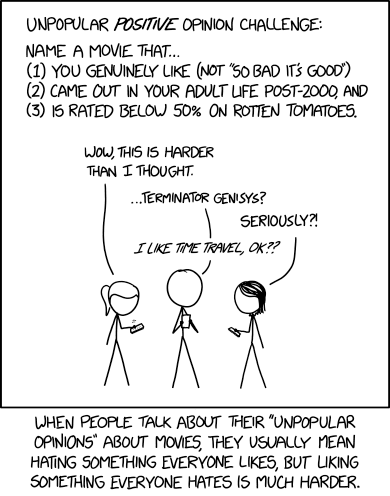On 20 May 2010, a police officer pulled over a white Ohio minivan on Interstate 40, near West Memphis, Arkansas. Unbeknown to officer Bill Evans, the occupants of the car, Jerry Kane Jr, and his teenage son, Joseph Kane, were self-described “sovereign citizens”: members of a growing domestic extremist movement whose adherents reject the authority of federal, state and local law.
Kane, who traveled the country giving instructional seminars on debt evasion, had been posing as a pastor. Religious literature was laid out conspicuously for anyone who might peer into the van, and, when Evans ran the van’s plates, they came back registered to the House of God’s Prayer, an Ohio church. Also in the van, though Evans did not know it, were weapons Kane had bought at a Nevada gun show days earlier.
Kane had been in a series of run-ins with law enforcement. After the most recent incident, a month earlier, he had decided that the next time a law enforcement officer bothered him would be the last.
Another officer patrolling nearby, Sgt Brandon Paudert, began to wonder why Evans was taking so long on a routine traffic stop. When he pulled up at the scene, he saw Evans and Kane speaking on the side of the highway. Evans handed him some puzzling paperwork that Kane had provided when asked for identification – vaguely official-looking documents filled with cryptic language. He examined the papers while Evans prepared to frisk Kane.
Suddenly, Jerry Kane turned and tackled Evans, knocking him down into a ditch. The younger Kane vaulted from the passenger side of the minivan and opened fire with an AK-47. Evans, an experienced officer who also served on the Swat team, was fatally wounded before he even drew his weapon. Paudert was struck down moments later while returning fire.
As the two officers bled out on the side of the highway, the Kanes jumped back in their van and sped off. A FedEx trucker who witnessed the shooting called 911.
The Kanes’ ideological beliefs – which the Anti-Defamation League (ADL) believes are shared by “well into the tens of thousands” of Americans – put them under the broad umbrella of the “Patriot” movement, a spectrum of groups who believe the US government has become a totalitarian and repressive force.
Although the Trump administration is reportedly planning to restructure the Department of Homeland Security’s countering violent extremism (CVE) program to focus exclusively on radical Islam, a 2014 national survey of 175 law enforcement agencies ranked sovereign citizens, not Islamic terrorists, as the most pressing terrorist threat. The survey ranked Islamic terrorists a close second, with the following top three threats all domestic in origin and sometimes overlapping: the militia movement, racist skinheads, and the neo-Nazi movement.
Though the federal CVE program already devotes almost the entirety of its resources to organizations combatting jihadism, the White House feels that the current name is “needlessly ‘politically correct’”, an anonymous government source told CNN.
Paudert’s father – who also happened to be the West Memphis chief of police – was driving home with his wife when he heard chatter on the police scanner about an officer-down situation on the interstate.
He headed to the scene, assuming a state trooper had been attacked. He then saw a figure in uniform sprawled at the bottom of the embankment. It was Bill Evans, his gun still locked in its holster.
Paudert then saw another body lying on the asphalt behind the vehicles. One of his officers tried to block him from going further. “Please,” he pleaded, “don’t go around there.” Paudert shoved him aside. As he came around the corner he saw his son, Brandon. Part of his head had been blown off. His arm was outstretched and his pistol still clutched in his hand.
Images of his son as a child, growing up, flooded through his mind. Then he saw his wife, who had been waiting in the car, coming toward him. He moved to stop her. “Is it Brandon?” she asked. “Yes, it is,” he said. “Is he OK?” she asked. “No,” he said, and she broke down.
Paudert died at the scene. He had been shot 14 times, and Evans, who died at the hospital, had been hit 11 times, suggesting that Joseph Kane had shot them again after they were already on the ground, wounded.
Both officers had been wearing ballistic vests, which the rifle rounds from 16-year-old Joseph Kane’s AK-47 punched through as if they were cloth.
The Kanes’ minivan was spotted 90 minutes later in a Walmart parking lot. Officers from multiple law enforcement agencies closed in. A shootout erupted. The Kanes managed to wound two more law enforcement officers before they were killed.
Cop killers and rightwing extremism: an overlap
In 2009, Daryl Johnson, a career federal intelligence analyst, wrote a report predicting a resurgence of what he called “rightwing extremism”.
Republicans were enraged by what they saw as politically motivated alarmism conflating nonviolent conservative and libertarian groups with terrorists, and especially angry at the report’s prediction that Iraq and Afghanistan veterans would be targets for recruitment by extremist groups.
Johnson defended the report’s conclusions as the product of reasoned and nonpartisan analysis. An Eagle Scout and registered Republican raised in a conservative Mormon family, he says he was particularly perplexed by the accusation that he was guilty of an anti-conservative agenda. But the then secretary of homeland security, Janet Napolitano, bowing to political pressure, disclaimed the report and ordered Johnson’s team dissolved. Johnson left government and started a private consultancy.
The eight years since seem to have borne out Johnson’s prediction. The year he left government, 2010, there was a suicide plane attack on the IRS building in Austin; then came a series of other incidents including the 2012 shooting of the Sikh temple in Wisconsin and the 2015 shooting of the Emanuel AME black church in Charleston.
According to data from the Anti-Defamation League, at least 45 police officers have been killed by domestic extremists since 2001. Of these, 10 were killed by leftwing extremists, 34 by rightwing extremists, and one by homegrown Islamist extremists.
In 2009, a man with white supremacist and anti-government views shot five police officers in Pittsburgh, three fatally.
In 2012, self-described sovereign citizens shot four sheriff’s deputies, two fatally, in St John the Baptist, a Louisiana parish.
In 2014, two Las Vegas police officers eating lunch were killed by a husband-and-wife pair inspired by the Patriot movement; the couple were killed by police before following through on their plan to take over a courthouse to execute public officials.
The same year, survivalist Eric Frein ambushed a Pennsylvania state police barracks, assassinating one state trooper and wounding another, then led law enforcement on a 48-day manhunt.
In 2016, a marine veteran-turned-sovereign citizen killed three law enforcement officers in Baton Rouge and wounded three others.
Johnson and other terrorism experts worry that a generation of people who came of age in the shadow of 9/11 may not understand that historically, most terror attacks in the US have been domestic in origin.
In fact, a 2016 report by the US Government Accountability Office noted that “of the 85 violent extremist incidents that resulted in death since September 12, 2001, far-rightwing violent extremist groups were responsible for 62 (73%) while radical Islamist violent extremists were responsible for 23 (27%).” (The report counts the 15 Beltway sniper shootings in 2002 as radical Islamist attacks, though the perpetrators’ motives are debated.)
Johnson said: “There are a lot of people – millennials – who have no idea of Oklahoma City and what happened there in 1995.”
The Oklahoma City bombing, which killed 168 people, including 19 children, was widely assumed to be related to Middle Eastern terrorism, but the perpetrator turned out to be someone quintessentially middle American: a white Gulf war veteran, Timothy McVeigh, who used his military knowledge to build a huge truck bomb out of commercial fertilizer. He and his collaborator Terry Nichols – who described himself as a sovereign citizen – saw the attack as the opening gambit in an armed revolt against a dictatorial and globalist federal government.
More specifically, the bombing was conceived as payback for two federal law enforcement operations that had become cultural flashpoints for the American far right: the incidents at Ruby Ridge, Idaho, in 1992, where a fundamentalist, Vicki Weaver, was killed by an FBI sniper’s bullet while holding her baby, and at Waco, Texas, in 1993, where federal agents negotiated a 51-day standoff with the Branch Davidian cult that only ended when most of the Davidians died in a horrific fire.
An explosion in activity by far-right militias since the 1980s
Partly as a consequence of the 1980s farm crisis, which left American farmers with crippling levels of debt, the 1990s saw an explosion in activity by far-right militias and fringe political and religious groups.
Gary Noesner, a retired FBI agent who served as the chief hostage negotiator during Ruby Ridge and Waco, as well as an 81-day standoff with the sovereign citizen-influenced Montana Freemen in 1996 and the response to a barricade and kidnapping incident by the Republic of Texas militia group in 1997, sees numerous parallels between the political climate then and now.
“Many of [the people attracted to such movements] are guys my age, middle-aged white guys. They’re seeing profound change and seeing that they have been left behind by the economic success of others and they want to return to a never-existent idyllic age when everyone was happy and everyone was white and everyone was self-sufficient.”
Thanks to the standoff between the Bundy family and the federal government, as well as the headline-grabbing 2016 occupation of the Malheur wildlife preserve in Oregon, the previously dormant militia movement has recently exploded in popularity.
Militia members are not necessarily sovereign citizens, but their beliefs are intertwined. Today’s sovereign citizen movement can be traced in part to two popular Patriot ideologies: the Posse Comitatus movement, built around the theory that elected county sheriffs are the highest legitimate law officers, and the Freemen-on-the-Land movement, a fringe ideology whose adherents believe themselves subject only to their own convoluted, conspiratorial, and selective interpretation of common law.
There was significant overlap between the Patriot movement and white nationalism. One of the movement’s foundational texts was The Turner Diaries, a 1978 novel by the white supremacist William Luther Pierce that describes a near future in which a small group of patriots fighting the extinction of the white race work to bring about a race war and the eventual genocide of non-white peoples.
McVeigh, who considered the book a blueprint for the coming revolution, was carrying an excerpt when he was arrested, although he later said he did not agree with the book’s racial content.
At the time, the Oklahoma City bombing actually appeared to spell the end of the militia movement: it led to a law enforcement crackdown and an evaporation of public sympathy for the radical right. McVeigh, unrepentant to the end, was executed in 2001, three months to the day before 9/11 made domestic terrorism seem like a distant memory.
The rise of sovereign citizens is linked to home foreclosures
Today, the face of domestic terror looks different from in McVeigh’s day – sometimes literally. Some extremists – such as Jerry Kane, who was an unemployed truck driver – still fit roughly into the American popular image: blue-collar white men hiding in the woods and training for doomsday. But many do not. Not all, for example, are people on the economic margins. In 2012, Christopher Lacy, a software engineer with sovereign beliefs who had started a new job only a week earlier, shot a California state trooper in the head during a routine traffic stop.
Furthermore, not all sovereign citizens are white: Gavin Long, a black sovereign citizen, killed three law enforcement officers in Louisiana last year. An increasing number of black Americans are coming to the sovereign movement from the Moorish Science Temple, a black Muslim church that believes African Americans are the descendants of ancient Moors.
Experts believe white nationalism has waned in influence on some elements of the radical right, opening the movement to anyone enthusiastically anti-government and anti-law enforcement.
“This is no longer a white supremacist movement,” said JJ MacNab, an expert on sovereign citizens and militias and the author of the forthcoming book The Seditionists: Inside the Explosive World of Anti-Government Extremism in America.
“There is still racism and bigotry,” she said. “Some of this is situational. If there are two members of your 12-person militia who are black, who are conservatives, military veterans, whatever – they are your brothers. You would kill for them and you would die for them. But two black guys in Ferguson, on the other side of the political spectrum – if there is a hierarchy of hatred, they are as low as you can get, lower than animals.”
Bob Paudert, the former West Memphis police chief, said: “Their only agenda is they are anti-government.” Paudert believes that in some ways, sovereign citizens are better understood as an extreme left or anarchist movement than an extreme right movement.
Joanna Mendelson, senior investigative researcher and director of special projects at the ADL, said: “I call them rightwing anarchists ... So perhaps it is almost a full circle, if you have that continuum.”
MacNab said: “The sovereign citizens really got big in the late 2000s because people were losing their houses to foreclosure.” Many are house-squatters, either because of foreclosure or because they are preying on others who vacated their houses. Financial crime is rampant among sovereign citizens, who are also well-known for harassing their enemies with fraudulent liens. “There are a lot of people scamming each other.”
A generational change is taking place as the anti-government movement attracts younger people. Many come from a cluster of amorphous internet communities, MacNab noted, including far-right trolls, the hacking collective Anonymous, and Copwatch, whose supporters upload critical videos of police on YouTube.
Younger and older sovereigns get an overwhelming share of their news from Infowars, the media channel of the conspiracy theorist Alex Jones, and RT, the propaganda network known for pushing negative stories about the American government.
Repeating the cycle
To the knowledge of Daryl Johnson, the former Department of Homeland Security (DHS) intelligence analyst, there are no longer any DHS analysts monitoring domestic terrorism full time. (When asked about it, a DHS representative said: “This is a question for the FBI.”)
“The FBI is the only US government agency that still has full-time analysts assessing threats from the far right,” Johnson said, “and their analytical cadre could be measured in the dozens.”
The FBI declined to comment. An FBI press officer noted that holding extremist opinions was not a crime, and the FBI only investigated people suspected of breaking federal law.
In the meantime, renaming CVE to focus only on radical Islam will merely further “alienate Muslims – justify their fears, and reinforce them as well”, Johnson said.
Among some of the anti-government groups MacNab tracks, Trump has enjoyed something of a honeymoon since the election, she said. But she believes that it won’t last: when they realize Trump is not the panacea they thought he was, they will feel used, and turn against him.
Extremist sentiment follows certain historical patterns, according to MacNab; the last cycle moved through a series of specific manifestations – tax resistance, sovereign ideology, the militia era – before ending with Oklahoma City.
“We are now repeating that cycle,” MacNab said, and getting near the end.
- Due to an error in the editing process, this article was amended on 15 May 2017 to reflect that the Kanes were killed by police.


 Park Board Commissioners and staff should be deeply ashamed that this is considered a ‘quick fix’. This changes absolutely nothing for those of us who bike through this parking lot on a regular basis, and especially for all the tourists cycling through this part of Vancouver, who may not be familiar/comfortable with cycling through this chaotic section of the Seaside Greenway. In fact,
Park Board Commissioners and staff should be deeply ashamed that this is considered a ‘quick fix’. This changes absolutely nothing for those of us who bike through this parking lot on a regular basis, and especially for all the tourists cycling through this part of Vancouver, who may not be familiar/comfortable with cycling through this chaotic section of the Seaside Greenway. In fact, 




























 and then using the Edit button to open it:
and then using the Edit button to open it:










